
The Special Air Service Regiment, officially abbreviated SASR though commonly known as the SAS, is a special forces unit of the Australian Army. Formed in 1957 as a company, it was modelled on the British SAS with which it shares the motto, "Who Dares Wins". Expanded to a regiment in August 1964, it is based at Campbell Barracks, in Swanbourne, a suburb of Perth, Western Australia, and is a direct command unit of the Special Operations Command.

The 1st Commando Regiment is an Australian Army Reserve special forces unit, part of Special Operations Command with an integrated structure of regular (full-time) soldiers and reserve (part-time) soldiers, which together with the full-time Australian Army 2nd Commando Regiment, provides the commando capability to Special Operations Command. Raised in 1955 it is the oldest unit within Special Operations Command and in 2008 deployed to Afghanistan to become the first Australian Army Reserve force element on combat operations since World War II. The regiment is the Command's capability lead for special warfare.

The Army Air Corps (AAC) is the aviation arm of the British Army, first formed in 1942 during the Second World War by grouping the various airborne units of the British Army. Today, there are eight regiments of the AAC, as well as two independent flights and two independent squadrons deployed in support of British Army operations around the world. Regiments and flights are located in the United Kingdom, Kenya, and Canada. Some AAC squadrons provide the air assault elements of 16 Air Assault Brigade, through Joint Helicopter Command.

A parachutist badge is a military badge awarded by the armed forces of many states to soldiers who have received parachute training and completed the required number of jumps. It is difficult to assess which country was the first to introduce such an award.

The Special Operations Command (SOCOMD) is an Australian Defence Force command that was established on 5 May 2003 to unite all of the Australian Army's special forces units and by 2008 was fully operational. Australia's Special Operations Command is of equivalent status to Australia's Fleet, Forces and Air Commands. It is modelled on the equivalent commands in the United States and British military forces, and is led by a major general as Special Operations Commander Australia (SOCAUST).

The 3rd Battalion, Royal Australian Regiment is a mechanised infantry battalion of the Australian Army, based in Kapyong Lines, Townsville as part of the 3rd Brigade. 3 RAR traces its lineage to 1945 and has seen operational service in Japan, Korea, Malaya, Borneo, South Vietnam, Rifle Company Butterworth, East Timor, the Solomon Islands, Afghanistan and Iraq.

No. 4 Squadron is a Royal Australian Air Force squadron composed of the air force special forces Combat Controllers, aircrew who operate the Pilatus PC-21 aircraft and instructors for the Australian Defence Force Joint Terminal Attack Controller (JTAC) course.
RAAF Base Edinburgh is a Royal Australian Air Force (RAAF) military airbase located in Edinburgh approximately 28 km (17 mi) north of Adelaide, South Australia, Australia and forms part of the Edinburgh Defence Precinct.
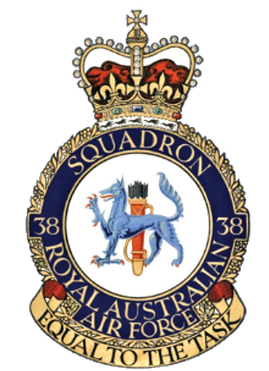
No. 38 Squadron was a Royal Australian Air Force (RAAF) transport and training unit active between 1943 and 2018. It was formed on 15 September 1943 and saw service during World War II transporting supplies and personnel between Australia and the combat zones in New Guinea and Borneo, using Douglas Dakota aircraft. Following the war, the squadron conducted regular courier flights between Australia and Japan in 1947 and 1948. No. 38 Squadron was deployed to Singapore from 1950 to 1952, supplying Commonwealth forces engaged in the Malayan Emergency and undertaking courier flights across Asia. In 1954 it became responsible for training RAAF personnel to operate Dakotas.
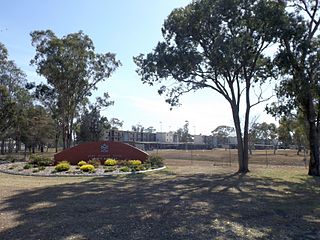
Oakey Army Aviation Centre is situated approximately 3 km (1.9 mi) from the town centre of Oakey in Queensland, Australia. It provides a training establishment for Australian Army Aviation, and also hosts the Republic of Singapore Air Force's "Cougar" 126 Squadron. The Defence name for the facility is Swartz Barracks, named for prominent politician, Army Aviation advocate, and ex-POW Sir Reginald Swartz.

The 171st Special Operations Aviation Squadron is an Australian Army helicopter squadron that provides aviation support to the Special Operations Command. The squadron is being equipped with the UH-60M Black Hawk helicopter. The squadron is based at Luscombe Airfield, Holsworthy Barracks, Sydney and forms part of the 6th Aviation Regiment as the regiment's sole operational squadron.
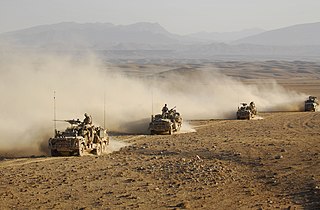
The special forces of the Australian Defence Force are units of Special Operations Command and associated units of the Royal Australian Navy and the Royal Australian Air Force that conduct and or support special operations to advance and protect the national security of the Commonwealth of Australia. The special forces of Australia have a lineage to a variety of units raised in the Second World War such as the Independent and Commando Companies, Z Special Unit, Navy Beach Commandos, and the Coastwatchers. Australian special forces have most recently been deployed to Iraq in Operation Okra as the Special Operations Task Group, as the Special Operations Task Group in Afghanistan, in Afghanistan in support of the Australian Secret Intelligence Service and regularly for counter-terrorism pre-deploy to locations of major domestic events throughout Australia in readiness to support law enforcement such as the 2014 G20 Brisbane summit.
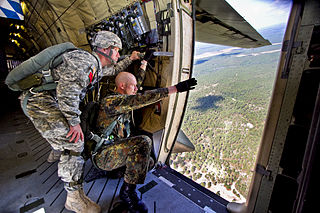
Jumpmasters are the expert paratroopers in an airborne unit who train and teach the military techniques for jumping from airplanes. They are responsible for training soldiers who enter Army Airborne School into paratroopers and managing airborne jump operations in airborne units across all branches of services.
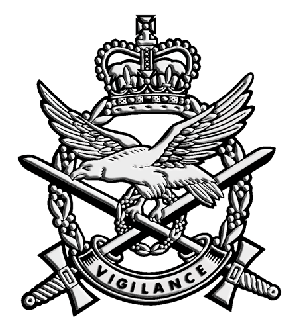
The Australian Army Aviation (AAAvn) is an administrative corps of the Australian Army. It was formed on 1 July 1968. The motto of the Australian Army Aviation corps is Vigilance.
The 173rd Special Operations Aviation Squadron is an Australian Army helicopter training squadron that provides support to the Special Operations Command. The squadron is being equipped with UH-60M Black Hawk helicopters. The squadron is based at Luscombe Airfield, Holsworthy Barracks, Sydney and forms part of the 6th Aviation Regiment.

The 2nd Commando Regiment is a special forces unit of the Australian Army and is part of Special Operations Command. The regiment was established on 19 June 2009 when the 4th Battalion RAR (Commando) was renamed. It is based at Holsworthy, New South Wales. The 2nd Commando Regiment trains and has served with coalition special forces units, and is highly regarded by these units. The regiment has been involved in operations in East Timor, Iraq and Afghanistan, where it was used in a direct action warfighting role. It has also been involved in domestic security operations including the 2006 Commonwealth Games and the 2014 G20 Leaders Summit. In 2019, the regiment was made the Command's capability lead for strategic strike.

Operation Okra is the Australian Defence Force (ADF) contribution to the military intervention against the Islamic State. The force is part of Joint Task Force 633 in the Middle East. The operation commenced on 31 August 2014, and its initial stated aim was to combat ISIL threats in Iraq. In September 2015, the Australian airstrikes were extended to Syria. In June 2017, flights in Syria were temporarily halted in response to American forces shooting down a Syrian Air Force jet, before later being resumed.

Airborne forces raised by Australia have included a number of conventional and special forces units. During the Second World War the Australian Army formed the 1st Parachute Battalion; however, it did not see action. In the post-war period Australia's parachute capability was primarily maintained by special forces units. In the early 1980s a parachute infantry capability was revived which led to the Parachute Battalion Group forming in 1983 based on the 3rd Battalion, Royal Australian Regiment. In 1997, a full time commando regiment was raised that was able to conduct large-scale operations which matured during the 2000s. In 2011, 3 RAR relinquished the parachute role with the Army deciding to opt out of a conventional parachute capability in preference to a special forces large-scale parachute capability.

The Australian Defence Force School of Special Operations is an Australian Army training unit part of the Defence Special Operations Training and Education Centre (DSOTEC) responsible for the recruitment, selection, training, education and trade management of all Special Operations Command (SOCOMD) personnel. It is based at Holsworthy Barracks, New South Wales. The school was established on 19 November 2019 following the renaming of the newly formed Special Operations Training and Education Centre.
The Regional Force Surveillance Group (RFSG) was formally established on 4 October 2018 to command the Australian Army Reserve's three Regional Force Surveillance Units and a training unit. The RFSG forms part of the 2nd Division.



















